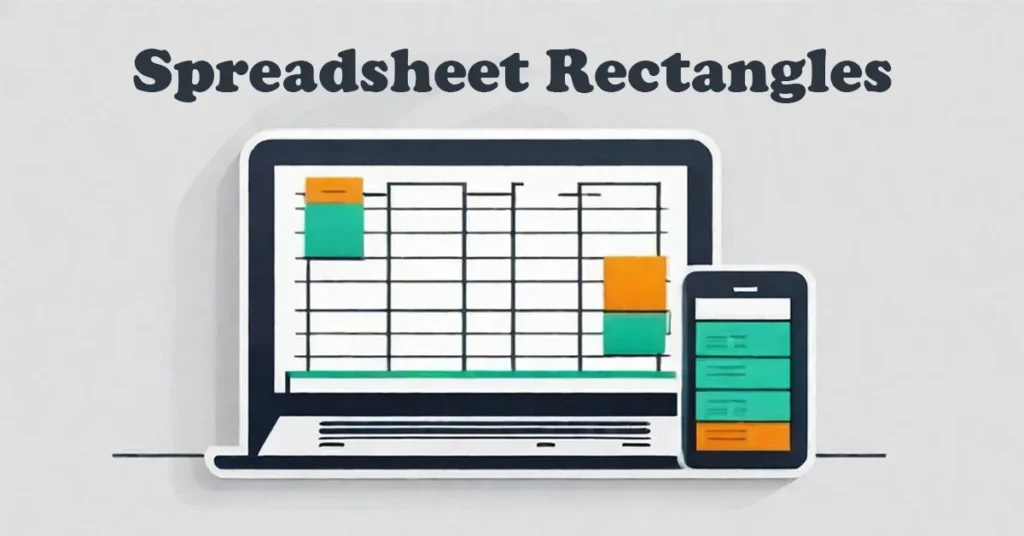Spreadsheets are used in various fields to handle diverse types of data. From financial records to project timelines, the versatility of spreadsheets lies in their ability to manage and display information in a structured manner. The concept of rectangles in spreadsheets, often referred to as cells or ranges, is central to this functionality.
ALSO READ: Pollaste: Revolutionizing Polling With Cutting-Edge Solutions
Understanding The Basics
What Are Spreadsheet Rectangles?
In spreadsheet terminology, a rectangle typically refers to a cell or a range of cells within a spreadsheet. Each cell is a rectangular block where you can input data, and multiple cells together form larger rectangles or ranges. These rectangles are crucial for organizing data into manageable segments.
Components of a Spreadsheet Rectangle
A spreadsheet rectangle consists of:
- Cells: The individual blocks within a spreadsheet where data is entered. Each cell is identified by a unique combination of a column letter and a row number (e.g., A1, B2).
- Ranges: A selection of multiple cells. For example, A1
refers to a rectangle that includes cells A1, A2, A3, B1, B2, and B3.
- Borders and Shading: These formatting options help define the boundaries of a rectangle and improve visual clarity.
Why Spreadsheet Rectangles Matter
Data Organization
Spreadsheet rectangles help in organizing data by breaking it down into smaller, manageable sections. For instance, if you’re tracking sales data, you can use rectangles to separate each month’s figures, making it easier to analyze trends over time.
Improved Readability
Well-defined rectangles improve the readability of your data. By using borders, shading, and consistent formatting, you can make complex datasets more comprehensible. This is especially useful in professional settings where clarity is crucial.
Practical Applications
Budgeting
When creating a budget, spreadsheet rectangles can help you categorize and track expenses. By setting up different rectangles for various expense categories and time periods, you can gain a clear view of your financial situation and make informed decisions.
Project Management
In project management, rectangles are used to create Gantt charts, track project milestones, and assign tasks. By organizing tasks and timelines into rectangles, project managers can visualize progress and allocate resources effectively.
Data Analysis
For data analysis, spreadsheet rectangles allow you to filter, sort, and summarize information efficiently. Using functions and formulas within these rectangles, you can perform complex calculations and generate insightful reports.
Tips For Efficient Use
Formatting
Proper formatting enhances the usability of your spreadsheet rectangles. Use bold headers, apply shading to distinguish different sections, and adjust column widths for better visibility. Consistent formatting also helps maintain a professional appearance.
Data Validation
Implement data validation rules within your rectangles to ensure data integrity. For example, you can set constraints to allow only numerical entries in a specific range of cells or provide dropdown lists for standardized input.
Formulas and Functions
Leverage formulas and functions to perform calculations and analyze data within your rectangles. Functions like SUM, AVERAGE, and VLOOKUP can simplify complex tasks and provide valuable insights.
Common Mistakes To Avoid
- Ignoring Cell Formatting: Neglecting to format cells can lead to confusion and misinterpretation of data.
- Overcomplicating Ranges: Creating overly complex ranges can make data harder to manage and analyze.
- Neglecting Data Validation: Failing to set validation rules may result in incorrect or inconsistent data entry.
Conclusion
Spreadsheet rectangles are more than just visual elements; they are essential tools for organizing, analyzing, and presenting data effectively. By understanding their components and applications, you can use them to enhance your data management skills and achieve better results in your personal and professional projects.
ALSO READ: Everything You Should Be Aware of in the Latest ontpresscom general updates
FAQs
What is a spreadsheet rectangle?
A spreadsheet rectangle refers to a cell or a range of cells within a spreadsheet. Each cell is a rectangular block where data is entered, and multiple cells form larger rectangles or ranges that help in organizing and analyzing information.
How can I use spreadsheet rectangles for budgeting?
To use spreadsheet rectangles for budgeting, you can create separate rectangles for different expense categories and time periods. This allows you to track and compare expenses easily, helping you manage your budget more effectively.
Can spreadsheet rectangles be used for project management?
Yes, spreadsheet rectangles are useful for project management. You can create Gantt charts, track milestones, and assign tasks using rectangles. This helps in visualizing project progress and managing resources efficiently.
What are some tips for formatting spreadsheet rectangles?
To format spreadsheet rectangles effectively, use bold headers, apply shading for clarity, and adjust column widths for better visibility. Consistent formatting improves readability and professionalism.
How can I avoid common mistakes with spreadsheet rectangles?
To avoid common mistakes, ensure proper cell formatting, simplify ranges to avoid complexity, and implement data validation rules to maintain data integrity.
